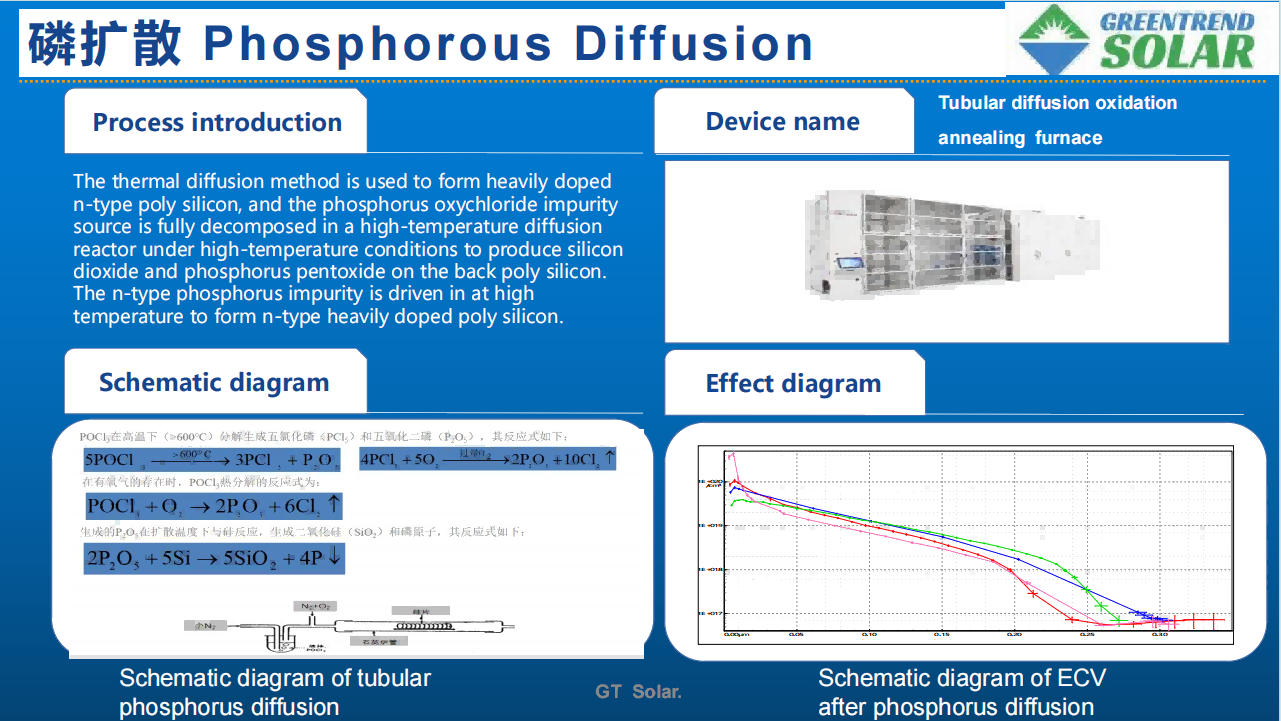1. TOPCon PE-poly coating technology
PE-poly (Plasma Enhanced Polysilicon deposition) coating technology, the full name of plasma enhanced chemical vapor deposition method, is a key core process technology for TOPCon batteries that integrates composite films such as tunneling layer and in-situ doped Poly-Si layer. A 1-2nm tunneling oxide layer is deposited on the back, and then a 60-100nm polysilicon layer is deposited to form a passivation structure, which acts as a carrier transport layer for the back or locally doped region.
2. Advantages and disadvantages of TOPCon PE-poly coating
The in-situ doping process of this technology can achieve the effect of high concentration phosphorus doping, which is conducive to thinning the Poly-Si layer, and PECVD can achieve a substantial reduction in cost. It has the advantages of slight plating, high yield, fast film forming speed, high doping efficiency, no quartz tube, and low cost of consumables. However, there are some problems, such as poor uniformity of film thickness, low density of film layer and explosive film, because hydrogen is involved in the reaction.

3. TOPCon PE-poly coating process principle
In the production of N-type solar cells, PECVD process is mainly used to deposit silicon nitride (SiNx) films and other passivation layers or conductive films. The specific process is to introduce gas sources such as silane SiH4 and ammonia NH3 into the reaction chamber under low vacuum conditions. Under the action of high-frequency plasma, gas molecules are activated and decomposed. A chemical reaction then occurs on the surface of the cooled silicon wafer to form a homogeneous silicon nitride film with excellent optical and electrical properties. This film can reduce the photoattenuation effect, improve the absorption of sunlight by the battery, and reduce the surface recombination loss, thereby improving the efficiency of the battery.
4. TOPCon PE-poly coating process core control point
① Gas purity and ratio control:
The purity and mixing ratio of the gas is precisely regulated to ensure that the composition of the film is accurate, which in turn affects its refractive index, transmittance and electronic properties.
② Chamber pressure and temperature:
By adjusting the pressure in the chamber and the substrate temperature, the growth rate and thickness uniformity of the film can be controlled, as well as the crystallization quality of the film can be optimized.
③ Plasma energy input:
Precisely controlling the energy input of the plasma through microwave or radio frequency power supplies contributes to the formation of structurally stable and high-performance films.
④ Film quality and thickness monitoring:
The deposition process is monitored in real time, and the optical and electrical properties of the film are strictly detected to ensure that the preset requirements are met.
